A 77-dB Dynamic-Range Analog Front-End for Fine-Dust Detection Systems with Dual-Mode Ultra-Low Noise TIA †
Abstract
:1. Introduction
2. The Proposed Fine-Dust Detection Analog Front-End Signal Conditioning Path
3. Dual-Mode Adjustable Gain Low Noise TIA with Indirect Feedback Biasing
4. DC Offset Cancellation (DCOC)
5. Single-to-Differential Amplifier (SDA)
6. Programmable Gain Amplifier (PGA)
7. Experimental Measurement
8. Conclusions
Author Contributions
Funding
Acknowledgments
Conflicts of Interest
References
- World Health Organization. Air Pollution. 2020. Available online: www.who.int/health-topics/air-pollution (accessed on 22 September 2021).
- Pope, C.A., III; Burnett, R.T.; Thun, M.J.; Calle, E.E.; Krewski, D.; Ito, K.; Thurston, G.D. Lung cancer, cardiopulmonary mortality, and longterm exposure to fine particulate air pollution. J. Amer. Med. Assoc. 2002, 287, 1132–1141. [Google Scholar] [CrossRef] [PubMed] [Green Version]
- Xing, Y.-F.; Xu, Y.-H.; Shi, M.-H.; Lian, Y.-X. The impact of PM2.5 on the human respiratory system. J. Thoracic Dis. 2016, 8, 69–74. [Google Scholar]
- Rrook, R.D.; Rajagopalan, S.; Pope, C.A., 3rd; Brook, J.R.; Bhatnagar, A.; Diez-Roux, A.V.; Holguin, F.; Hong, Y.; Luepker, R.V.; Mittleman, M.A.; et al. Particulate matter air pollution and cardiovascular disease: An update to the scientific statement from the American heart association. Circulation 2010, 121, 2331–2378. [Google Scholar]
- Lelieveld, J.; Evans, J.S.; Fnais, M.; Giannadaki, D.; Pozzer, A. The contribution of outdoor air pollution sources to premature mortality on a global scale. Nature 2015, 525, 367–371. [Google Scholar] [CrossRef]
- Hu, Y.; Fan, J.; Zhang, H.; Chen, X.; Dai, G. An estimated method of urban PM2.5 concentration distribution for a mobile sensing system. Pervasive Mob. Comput. 2016, 25, 88–103. [Google Scholar] [CrossRef]
- Gao, Y.; Dong, W.; Guo, K.; Liu, X.; Chen, Y.; Liu, X.; Bu, J.; Chen, C. Mosaic: A low-cost mobile sensing system for urban air quality monitoring. In Proceedings of the 35th IEEE International Conference on Computer Communications (INFOCOM 2016), San Francisco, CA, USA, 10–15 April 2016; pp. 1–9. [Google Scholar]
- Alvarado, M.; Gonzalez, F.; Fletcher, A.; Doshi, A. Towards the development of a low cost airborne sensing system to monitor dust particles after blasting at open-pit mine sites. Sensors 2015, 15, 19667–19687. [Google Scholar] [CrossRef] [Green Version]
- She, L.; Xue, Y.; Yang, X.; Guang, J.; Li, Y.; Che, Y.; Fan, C.; Xie, Y. Dust Detection and Intensity Estimation Using Himawari-8/AHI Observation. Remote Sens. 2018, 10, 490. [Google Scholar] [CrossRef] [Green Version]
- Ma, R.; Liu, M.; Zheng, H.; Zhu, Z. A 77-dB Dynamic Range Low-Power Variable-Gain Transimpedance Amplifier for Linear LADAR. IEEE Trans. Circuit Syst. II 2018, 65, 171–175. [Google Scholar] [CrossRef]
- Garcıa del Pozo, J.M.; Celma, S.; Sanz, M.T.; Alegre, J.P. CMOS tunable TIA for 1.25 Gbit/s optical gigabit Ethernet. Electron. Lett. 2007, 43, 1303–1305. [Google Scholar] [CrossRef]
- Rad, R.E.; Hejazi, A.; Pu, Y.; Lee, K.-Y. A Dual-Mode Adjustable High-Gain Ultra-Low Noise Transimpedance Amplifier for Fine Dust Detection. In Proceedings of the 2020 IEEE International Symposium on Circuits and Systems (ISCAS), Seville, Spain, 12–14 October 2020. [Google Scholar]
- Chuah, J.H.; Holburn, D. Design of Low-Noise High-Gain CMOS Transimpedance Amplifier for Intelligent Sensing of Secondary Electrons. IEEE Sens. J. 2015, 15, 5997–6004. [Google Scholar] [CrossRef]
- Kim, S.; Cho, S.; Park, S.M. Dual-mode CMOS feed-forward transimpedance amplifier for LADARs. Electron. Lett. 2014, 50, 1678–1680. [Google Scholar] [CrossRef]
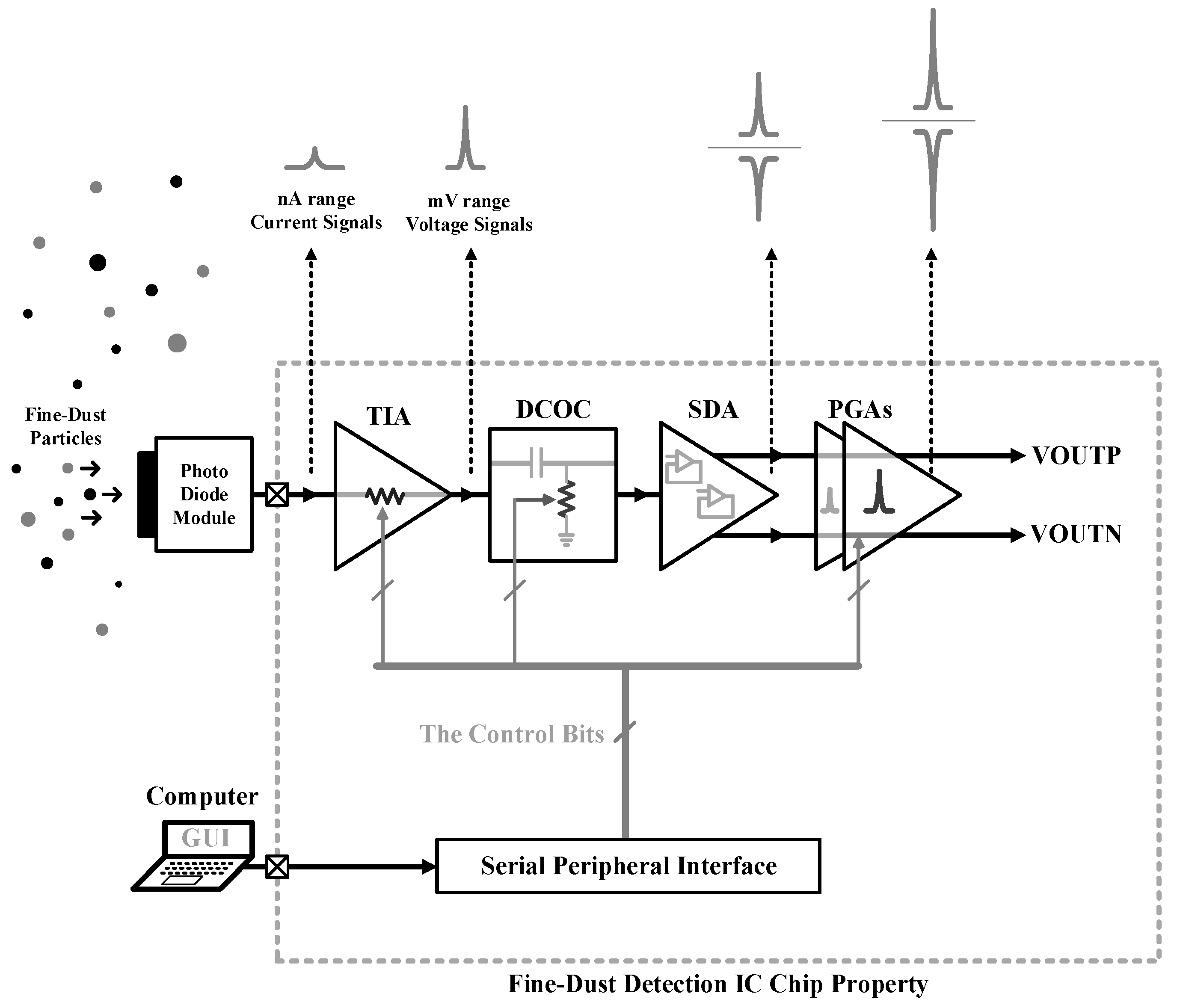

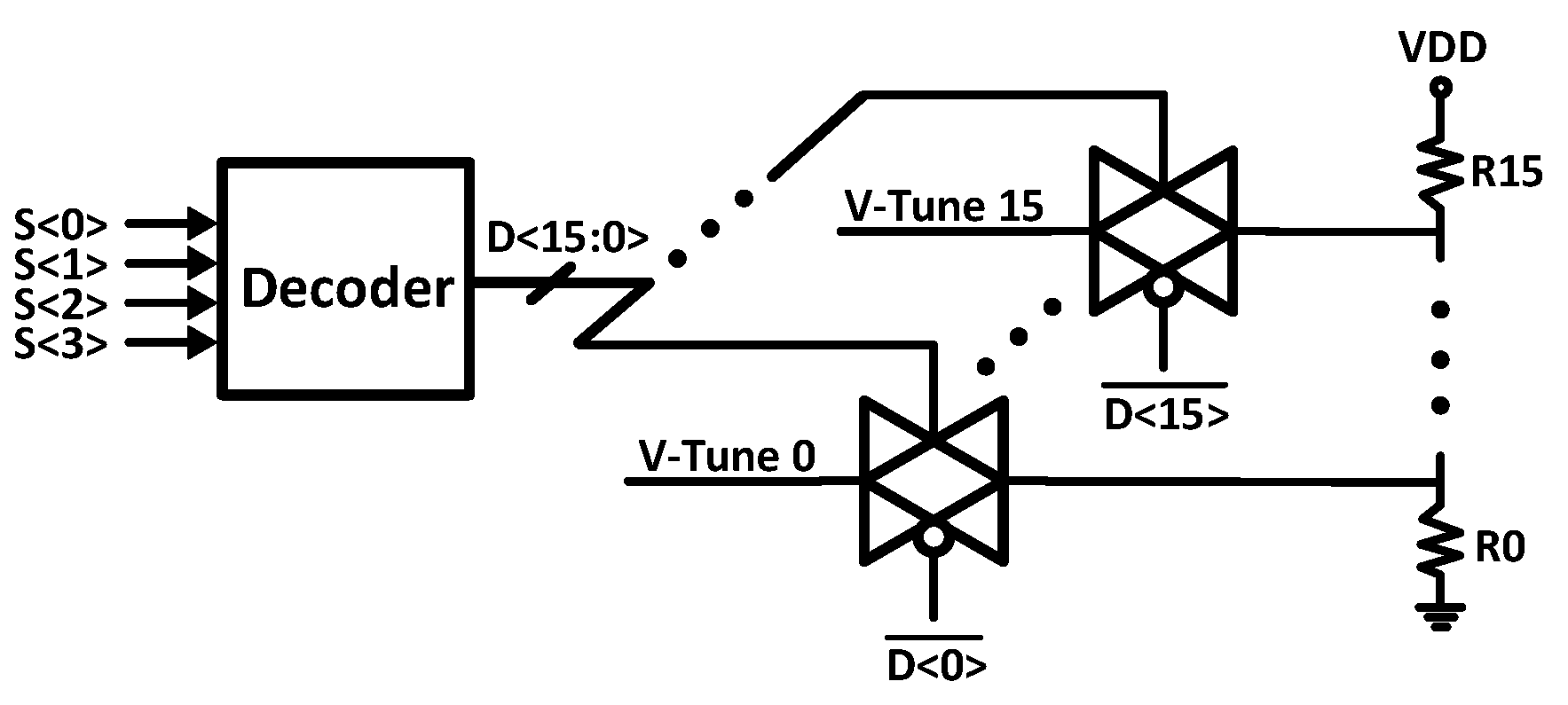


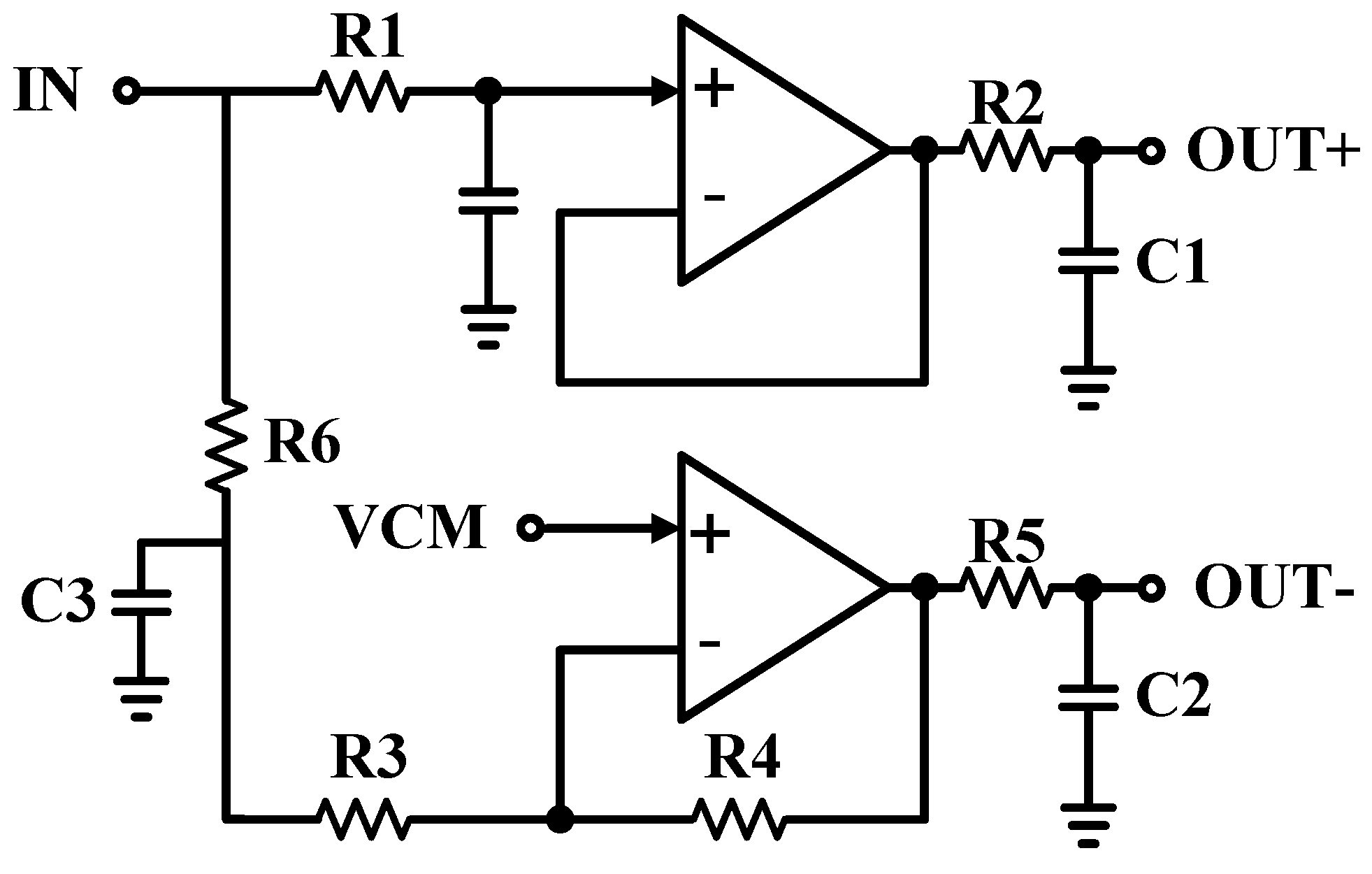


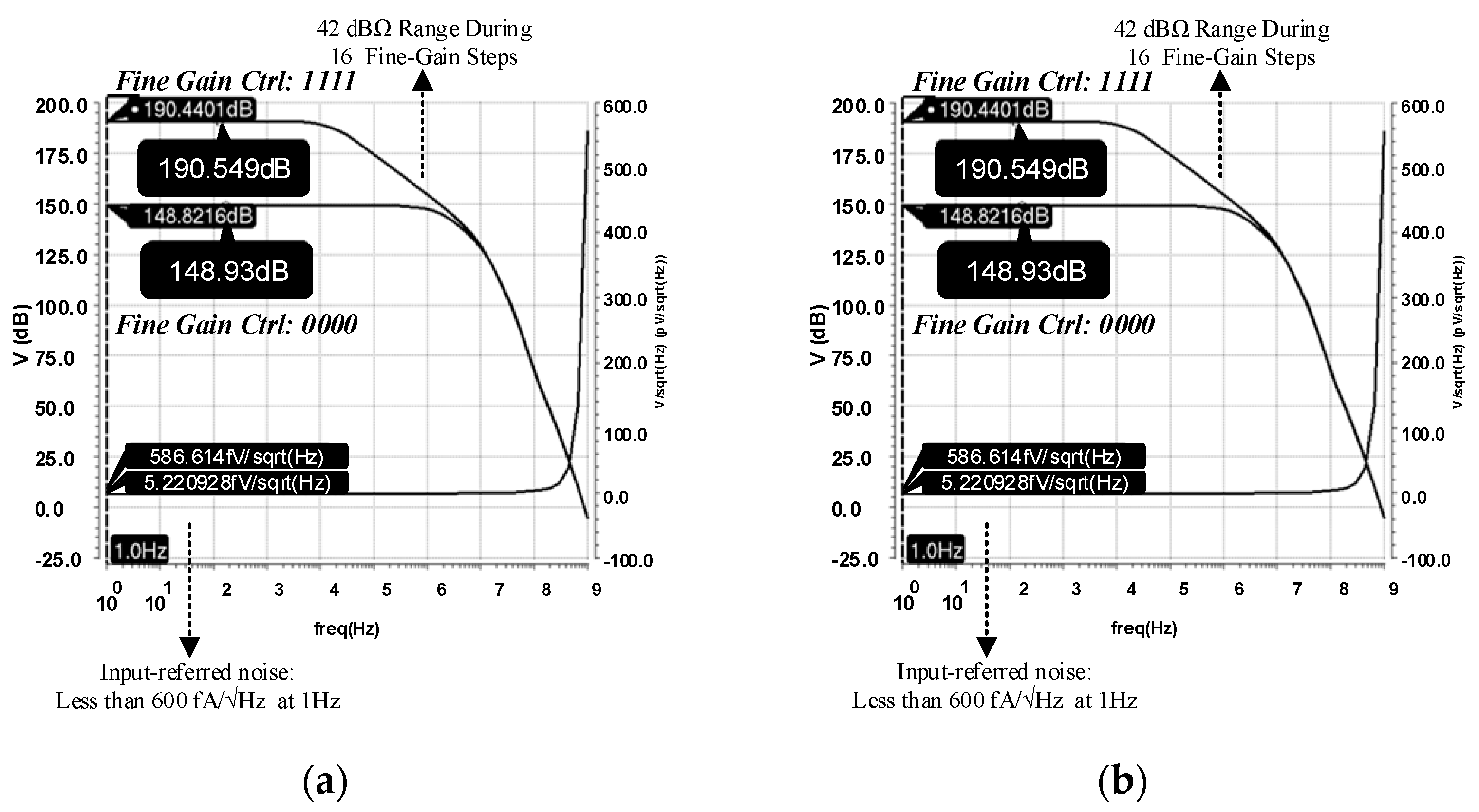



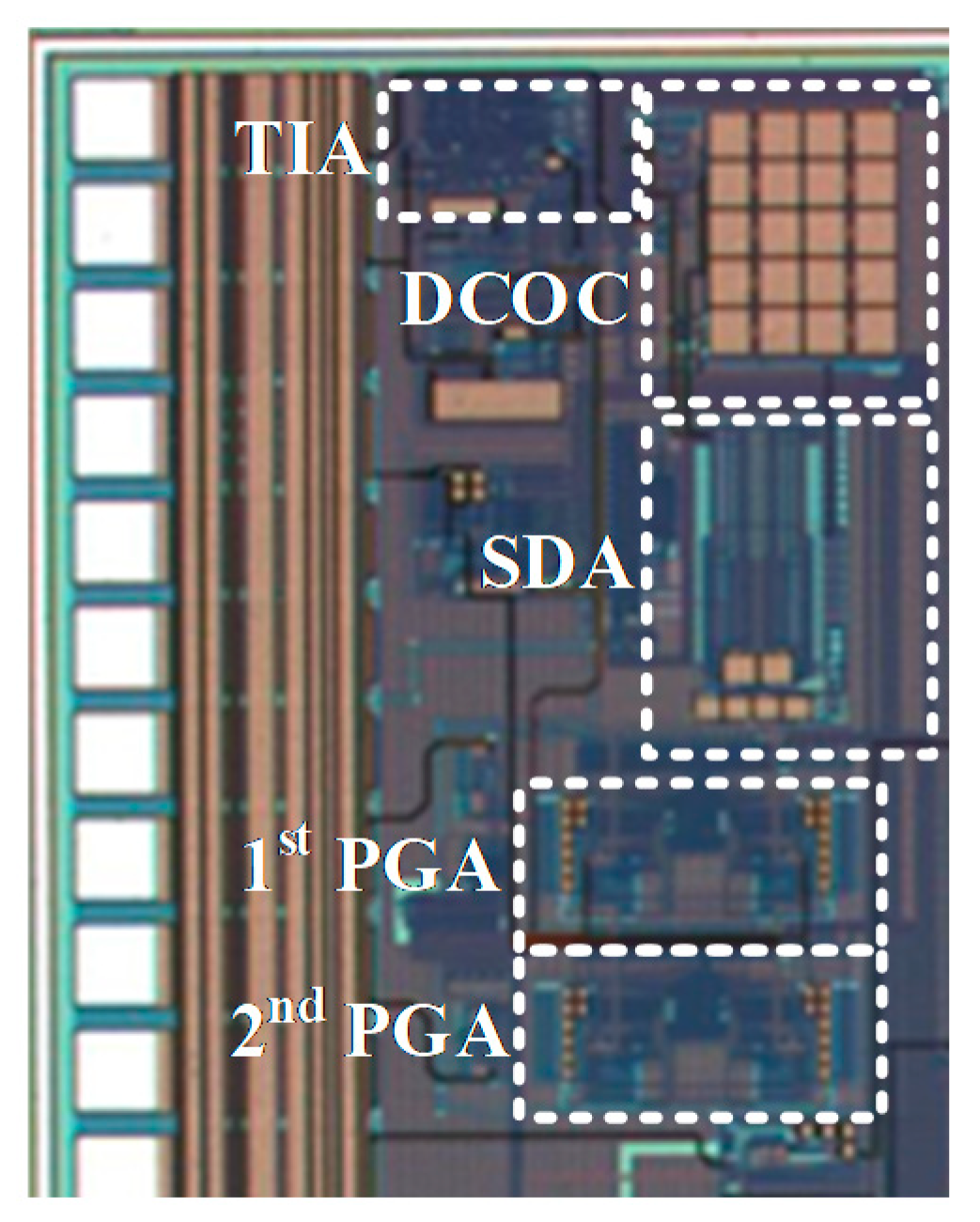

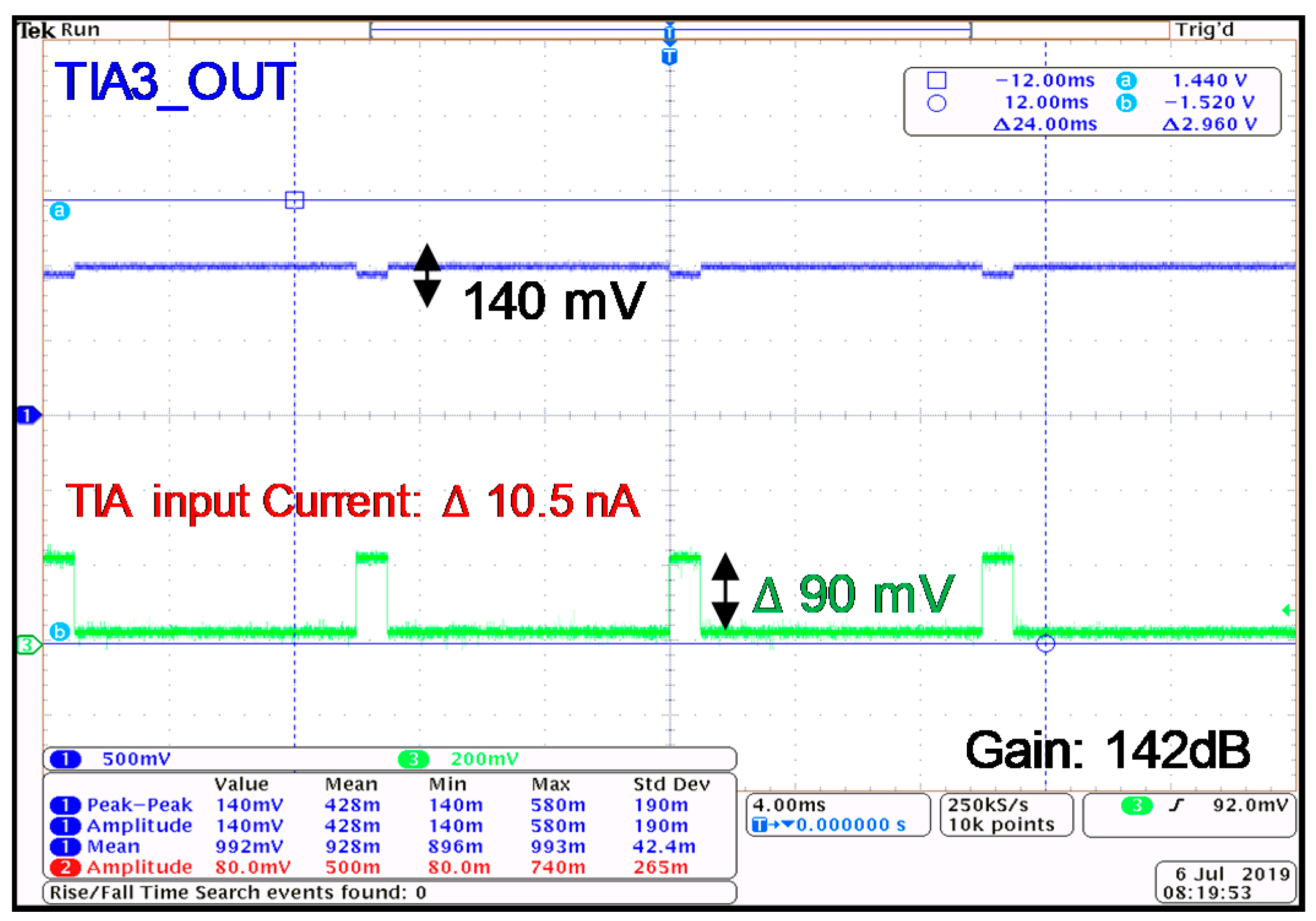
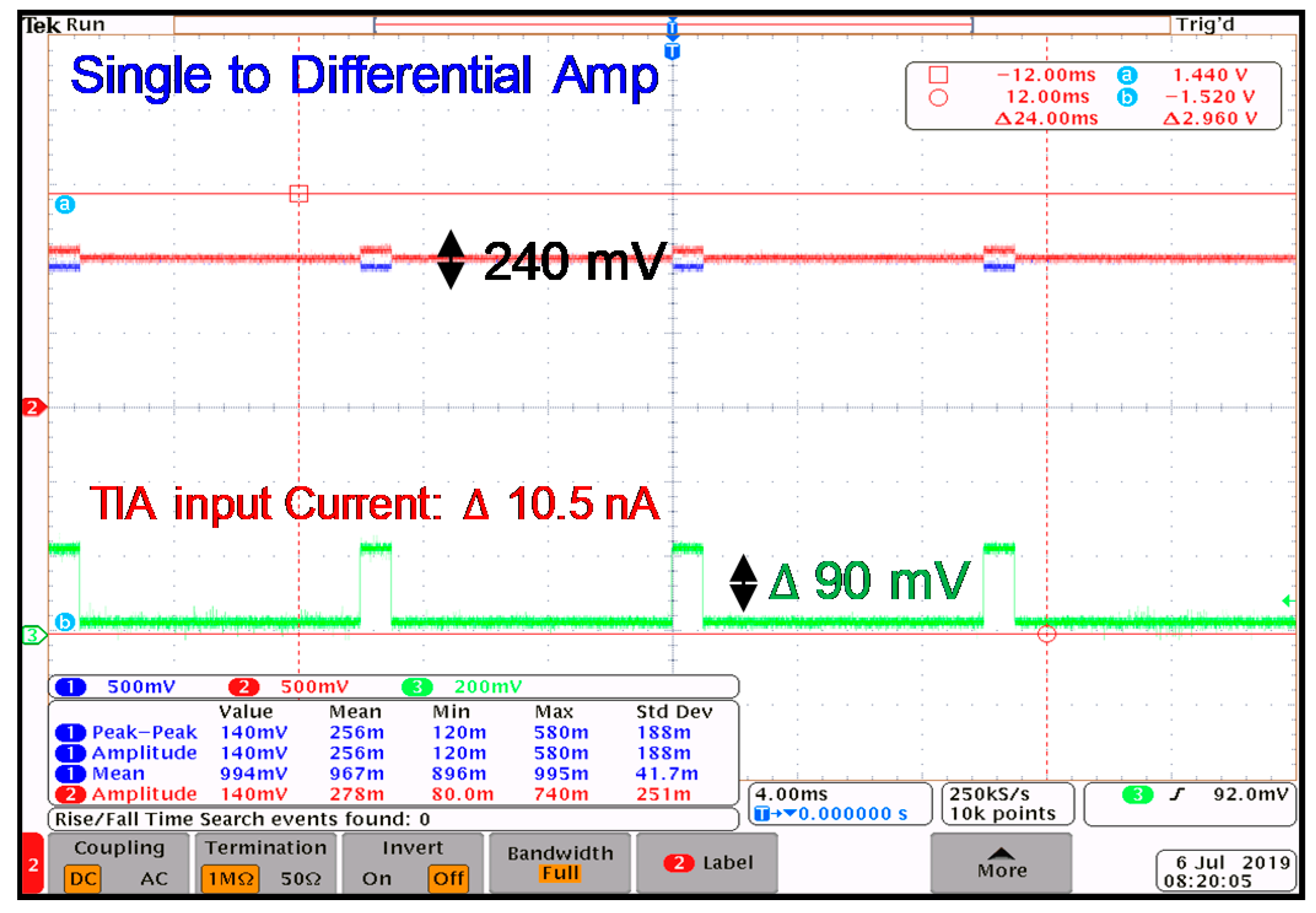
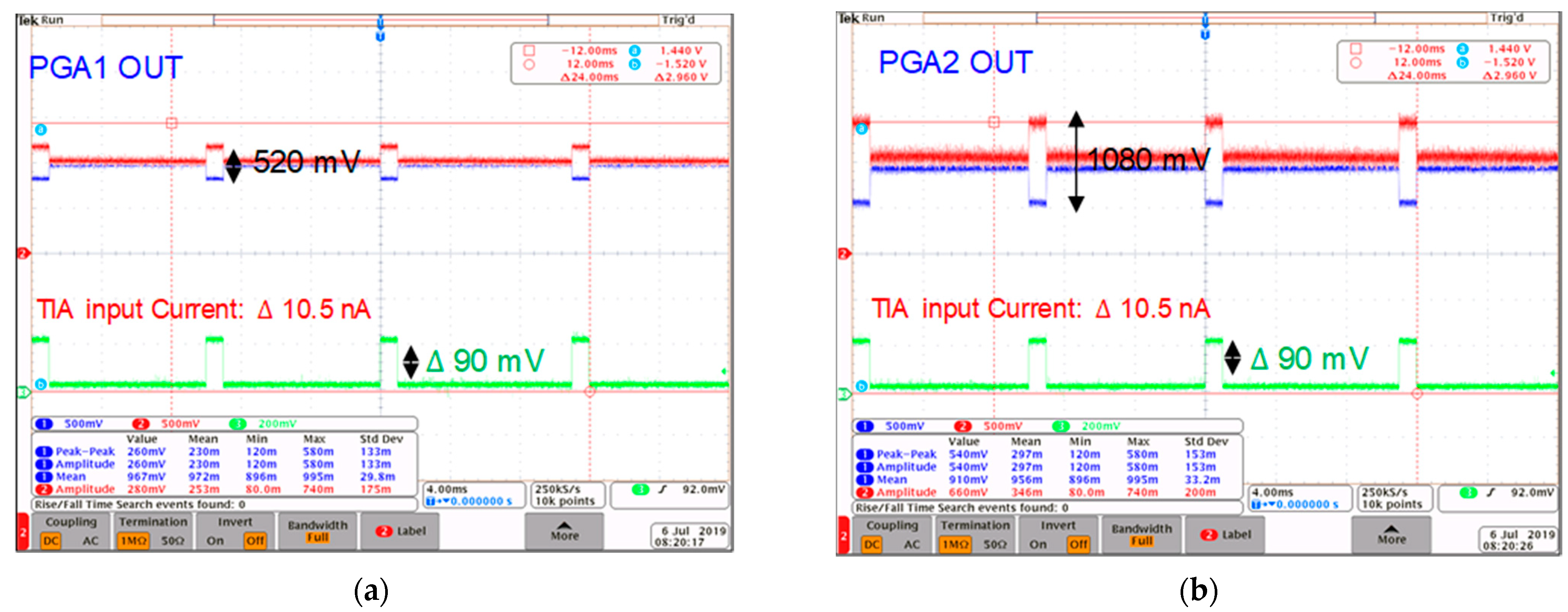
| Parameters | [10] | [11] | [13] | [14] | This Work |
|---|---|---|---|---|---|
| Technology (CMOS) | 0.18 µm | 0.35 µm | 0.35 µm | 0.18 µm | 0.18 µm |
| Supply (V) | 3.3 | 1.8 | N/A | 1.8 | 3.3 |
| Topology | Common-Mode Amplifier | Shunt-feedback amplifier | 3-stage push-pull inverters | Dual-mode CMOS feed-forward | Adjustable-Gain 3-stage Push-pull inverters |
| CPD (pF) | 2 | 0.5 | 10 | 0.5 | 1 |
| Gain (dBΩ) | 106 | 65 | 107.3 | 76 | 142 |
| Application | LADAR | Ethernet | SEM | LADAR | Bio |
| Bandwidth | 50 MHz | 1.1 GHz | 12.5 MHz | 720 MHz | 20 kHz |
| Maximum IRN pA/√Hz | 1.52 | 10.9 | 3.54 | N/A | 0.03 |
| Coarse-Gain Steps Dynamic Range (dB) | - | - | - | - | 67 |
| Fine-Gain Steps Dynamic Range (dB) | - | - | - | - | 42 |
| Power Consumption (mW) | 8 | 6.2 | 60 | 20.7 | 2.71 |
| Area | 283.8 k | NA | 15.9 k | 117.5 k | 10.9 k |
Publisher’s Note: MDPI stays neutral with regard to jurisdictional claims in published maps and institutional affiliations. |
© 2021 by the authors. Licensee MDPI, Basel, Switzerland. This article is an open access article distributed under the terms and conditions of the Creative Commons Attribution (CC BY) license (https://creativecommons.org/licenses/by/4.0/).
Share and Cite
Rad, R.E.; Hejazi, A.; Asl, S.-A.H.; Shehzad, K.; Verma, D.; Kim, S.; Rikan, B.S.; Pu, Y.; Kim, J.T.; Hwang, K.C.; et al. A 77-dB Dynamic-Range Analog Front-End for Fine-Dust Detection Systems with Dual-Mode Ultra-Low Noise TIA. Sensors 2021, 21, 6360. https://doi.org/10.3390/s21196360
Rad RE, Hejazi A, Asl S-AH, Shehzad K, Verma D, Kim S, Rikan BS, Pu Y, Kim JT, Hwang KC, et al. A 77-dB Dynamic-Range Analog Front-End for Fine-Dust Detection Systems with Dual-Mode Ultra-Low Noise TIA. Sensors. 2021; 21(19):6360. https://doi.org/10.3390/s21196360
Chicago/Turabian StyleRad, Reza E., Arash Hejazi, Seyed-Ali H. Asl, Khuram Shehzad, Deeksha Verma, SungJin Kim, Behnam S. Rikan, YoungGun Pu, Joon Tae Kim, Keum Cheol Hwang, and et al. 2021. "A 77-dB Dynamic-Range Analog Front-End for Fine-Dust Detection Systems with Dual-Mode Ultra-Low Noise TIA" Sensors 21, no. 19: 6360. https://doi.org/10.3390/s21196360
APA StyleRad, R. E., Hejazi, A., Asl, S.-A. H., Shehzad, K., Verma, D., Kim, S., Rikan, B. S., Pu, Y., Kim, J. T., Hwang, K. C., Yang, Y., & Lee, K.-Y. (2021). A 77-dB Dynamic-Range Analog Front-End for Fine-Dust Detection Systems with Dual-Mode Ultra-Low Noise TIA. Sensors, 21(19), 6360. https://doi.org/10.3390/s21196360








